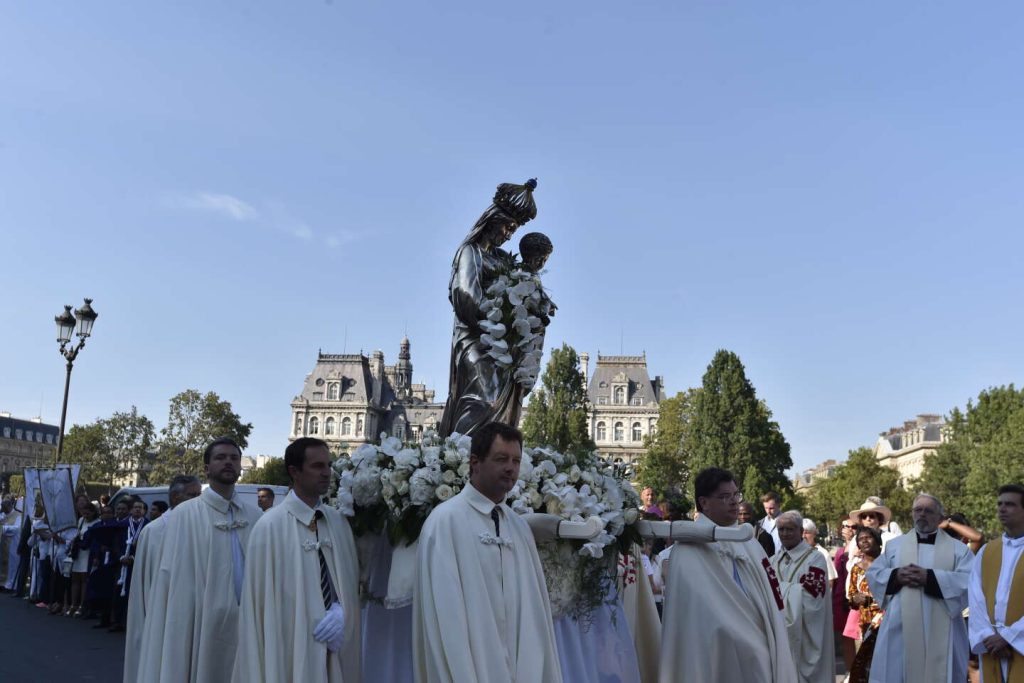In the Cathedral of Notre-Dame de Paris, a marble scene has been playing out for the past three centuries at the center of the cathedral. In the middle of the main altar stands a statue of the Virgin Mary, surrounded by two kneeling men who many visitors may not realize were two of the most illustrious sovereigns of France: Louis XIV, who reigned from 1643 to 1715, and his father Louis XIII, who reigned from 1610 to 1643. This spectacular ensemble was created in the final years of the reign of the Sun King, and goes beyond being a simple gift from a son to his father. It embodies a desire that connects France to this major figure of Christianity: the vow made by Louis XIII in 1638 to consecrate his kingdom to the Virgin and make August 15th the day of her celebration.
The official declaration made on February 10, 1638, states, “Taking the most holy and glorious Virgin as the special protector of our kingdom, we particularly consecrate to her our person, our state, our crown and our subjects.” This declaration, which holds the force of law, outlines the celebrations that will take place every year for the Feast of the Assumption, a Catholic tradition marking the bodily assumption of Mary into heaven. Orations and processions will now be held throughout the kingdom on this day to “implore her protection.” With only five years left to live, Louis XIII, the son of Henri IV and Marie de Medici, felt relieved to have survived the greatest perils of his life. He had faced plots by his brother Gaston d’Orleans, the Thirty Years’ War that raged across Europe from 1618 to 1648, and the immense danger posed by his inability to produce an heir to the throne.
The pregnancy of his wife, Anne of Austria, in 1638 after twenty-three years of barren marriage, was seen as a grace from the Virgin. The child, who would become Louis XIV, was named Louis-Dieudonné, echoing this providence. Historian of art Léo Minois points out that “This birth was perceived as a miracle, a divine answer to the consecration of the kingdom.” It was in this context that Louis XIII’s vow, encouraged by his minister Cardinal Richelieu, solidified a long-standing connection between the Virgin and French power. “Regnum Galliae, regnum Mariae” which means “The kingdom of France is the kingdom of Mary,” was a phrase attributed to Pope Urban II. In the 20th century, his distant successor, Pope John XXIII, added that “In the order of Providence, each nation has a mission, and sometimes a motto is enough to define it.” In the case of France, when one says “Regnum Galliae, regnum Mariae”, one perfectly expresses the tribute of honor and love from the sons and descendants of Clovis.


